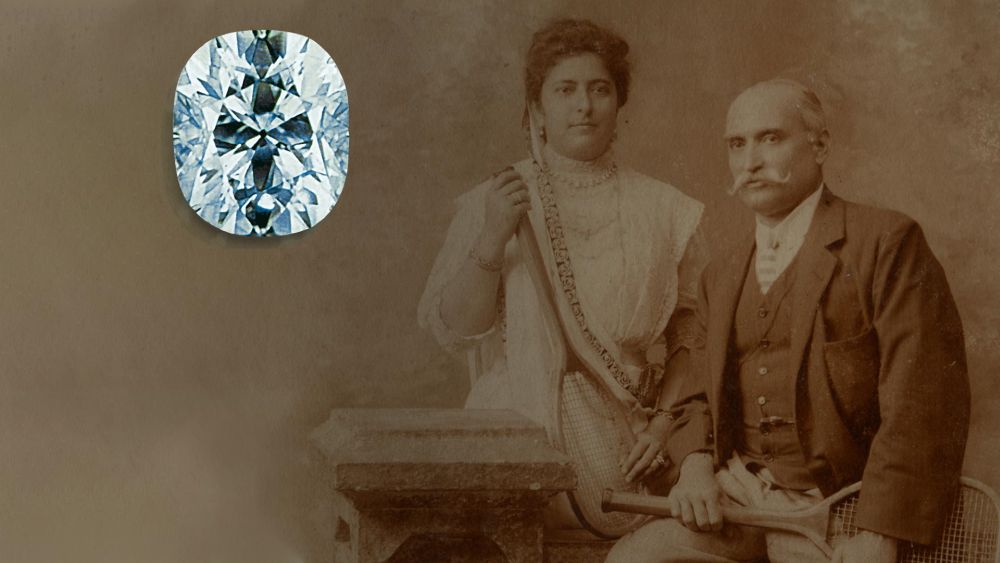

*Image credit: tata.com
The Jagersfontein Mine, located in South Africa, has been of the great diamond mines of the world.
Discovered in 1870, it has yielded over 9.6 million carats of beautiful diamonds over its lifetime. Yet the unique stone that was discovered here in 1895 was particularly special, in more ways than one.
First and foremost, this magnificent large diamond, weighing 245.35 carats, turned out to be the sixth-largest diamond in the world. This means it was twice as large as the legendary Kohinoor.
Second, it was a diamond of exceptional purity and sparkle and often described as the most perfectly cut of all large diamonds. But most importantly, as this interesting story will soon reveal to you, it went on to play a very important role for the Tata Group, well beyond the normal remit of diamonds and jewellery.
The large rough stone was sent to Amsterdam in 1896 for polishing, where it became clear that it was yielding a superb, colourless, cushion-cut diamond. A stone so perfect in cut, that it could be balanced on its narrow culet, less than 2 mm across.
In 1897, it was named the “Jubilee” Diamond, to commemorate the diamond jubilee of Queen Victoria. Here is a rare instance of a diamond being named for a diamond jubilee, quite a literal commemoration! Indeed, the consortium of three London merchants who owned it then may have even thought that this diamond would be best placed in Her Majesty’s royal crown.
However, destiny had other plans in store for the Jubilee Diamond. In 1900, it was displayed at the Paris Exposition, which was held to celebrate the achievements of the past hundred years, and also to welcome the new century.
The diamond was a centre of attraction at this global fair, and received a lot of praise from experts. At that time, it must have caught the imagination of Sir Dorabji Tata, the elder son of Jamsetji Tata, founder of the Tata Group. Two years earlier - on Valentine’s Day of 1898 - Dorabji Tata had been married to Meherbai, and he was deeply in love with her. He now decided to gift her the Jubilee Diamond.
Dorabji bought the diamond from the London merchants for around UK £100,000. Lady Meherbai Tata had it set on a platinum claw, and it was then hung on a platinum chain which she could wear around her neck. She would wear it for special occasions, and it is quite possible that she may even have worn it while meeting the then US President Calvin Coolidge, or the King and Queen of England.
Lady Meherbai Tata was a pioneer of the women’s movement in India, and she was also very proud of her Indian roots, so she inevitably wore a saree to celebrate her Indian heritage, even while travelling abroad. The Jubilee Diamond must have been a perfect accessory, complementing her beautiful Parsee sarees.
However, this was a very valuable diamond, and heavily insured too. Dinsi Gazdar, who was a well known jeweler of those days at the Taj Mahal Hotel, Mumbai, remembered Sir Dorabji Tata stating that every time his wife took the diamond out of their safe deposit vault in London, he was "fined" £200 by the insurance company.
In the meanwhile, Sir Dorabji Tata had succeeded his father as Chairman of the Tata Group, and was busy managing the affairs of Tata Steel, Taj Mahal Hotel and other business ventures of the Group.
Tata Steel, based in Jamshedpur, had undertaken an expansion programme, post the first World War, and the Company, which was still in its early years, now ran into a host of difficulties, ranging from price inflation to labour issues.
Demand in Japan, a large market, came spiraling downwards because of an earthquake there. By 1923, there was a shortage of cash and liquidity, and the Tatas grasped for breath, making valiant efforts to raise funds.
In 1924, a telegram arrived from Jamshedpur, and it was bad news. It simply said that there was not enough money to pay wages to the employees of Tata Steel. Would the fledgling Company survive, or would it be forced to shut down ? Would the dreams and visions that guided the establishment of India’s first integrated steel plant come tumbling down ?
Sir Dorabji Tata did not hesitate for a moment. He had to save the Company, so that it could survive during these difficult times. His wife Meherbai and he decided to pledge their entire personal wealth, which came to around Rs. 1 crore (a huge amount in those days), to a bank, to raise funds for Tata Steel. Sir Dorabji pledged his family wealth to the Imperial Bank. This included all the jewellery owned by his wife, including the Jubilee Diamond.
The Imperial Bank provided the Tatas a loan of Rs. 1 crore, against this personal pledge. The money was used to fund Tata Steel. Soon, the Company’s expanded production facilities began producing returns, and the situation took a turn for the better. Not a single worker was retrenched during this period of intense struggle, though shareholders were not paid dividends for the next several years.
The Company returned to profitability within a few years, and the pledge was repaid. By the late 1930s, Tata Steel began hugely prospering once again. By then, Sir Dorabji Tata had passed away, but the personal sacrifice made by his wife and by himself, in pledging their wealth and jewellery, had saved Tata Steel from extinction.
Lady Meherbai Tata died of leukemia, at the relatively young age of 50 years, in 1931. Sir Dorabji Tata passed away just a year later, in 1932. He willed his entire fortune to the Sir Dorabji Tata charitable Trust - including, of course, the Jubilee Diamond. The Jubilee Diamond was sold through Cartier in the year 1937, and the funds from this sale went to the Trust.
The Sir Dorabji Tata Trust used these funds that it was endowed with, to establish the Tata Memorial Hospital and many other Institutions, including the Tata Institute of Social Sciences and the Tata Institute of Fundamental Research.
This surely makes the Jubilee Diamond unique – it is perhaps the only diamond in the history of mankind that has saved a steel company from collapse, and hence saved several livelihoods from being lost, and has then gone on to create a cancer hospital as well. No diamond has served worthier causes, and this was only possible because of two wonderful hearts of gold.
What happened to the Jubilee Diamond, thereafter ? It was acquired from Cartier by M. Paul-Louis Weiller, a French industrialist. It has since been bought by Robert Mouwad, of the House of Mouwad, reputed jewelers and watchmakers since 1890. There it rests today, its brilliance as splendid as ever, on the back of its eventful history. A beautiful, magnificent diamond with a Tata history.
When Sir Dorabji Tata died, the Times of India wrote, on 4th June 1932 –
“Sir Dorabji’s fame, however, will not rest on his great (industrial) achievements, splendid as they were, or on his wealth, but it will rest solidly on the use he has made of his possessions.”
Reflection
Truly, what use we put our possessions to, is the real value that they serve. The story of the Jubilee Diamond stands testimony to this truth.